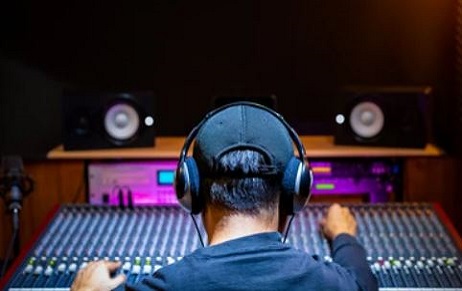Preserving Indigenous Wisdom In The Digital Age: The Significance Of Traditional Knowledge Digital library
Introduction
Indigenous knowledge and cultural heritage are at a critical crossroads in a world that is embracing digital innovations and technological advancements at a rapid pace. The Traditional Knowledge Digital Library is one outstanding project that aims to close the gap between tradition and modernity (TKDL). This innovative project ensures that indigenous communities’ priceless knowledge is preserved amidst the sweeping waves of globalization, serving as more than just a storehouse of antiquated knowledge. We will discuss the importance of TKDL as a resource for indigenous communities and how it acts as a lighthouse for the preservation of their rich cultural heritage in this article. The Study on Global AGEing and Adult Health (SAGE) found that India reported the highest use of traditional medicines in a survey conducted in six populous middle-income countries in 2016.[1] Because they are more widely accepted and less expensive than modern medications, traditional medicines are seen to be crucial for maintaining population health in low- and middle-income countries. Because traditional knowledge exhibits characteristics of both intellectual property and public domain, while also being subject to their limitations, it is of a unique kind. Such knowledge becomes part of the public domain, where it can be exploited since exclusive intellectual property rights (IPR) cannot be exercised over it because it lacks qualities like innovation and an identifiable owner. Therefore, safeguarding traditional knowledge has shown to be a difficult undertaking.
Bio Piracy
Bio-piracy is the term for the unauthorized utilization of a nation’s bioresources by people, organizations, or businesses from other nations. “Appropriation, usually through patents, of legal rights over indigenous biomedical knowledge without compensation to indigenous groups who originally developed such knowledge” is what it refers to.[2] Countries that have rich bio reserves are easy victims to biopiracy, most of the southern countries have abundant bio reserves from which the world has benefitted. Yet none had claimed anything in return it was only after globalization that developed countries started capitalizing on these traditional methods and patenting them. This practice reduces the scope of development in third-world countries.
Due to a lack of technical expertise, developing nations are unable to fully utilize their resources in industrial processes. The developed world is taking advantage of the laxity of the developing nations because they are wealthy in technology but poor in resources. They constantly use these biological resources for their motivations. Developing nations have only received a negligible portion of the value of the raw materials and knowledge that they offer in return.
Significance of Traditional Knowledge
Traditional knowledge is the sacred information that tribal communities have developed and possess. It encompasses agricultural, environmental, and medical knowledge which has been passed down through the generations within the community at large. Due to its sui generis nature, this knowledge needs to be safeguarded because it is fundamental to the communities’ identity and could be capitalized by businesses or individuals who could patent it without offering any benefits to the communities.[3] In India there have been 3 vital cases namely that of turmeric, neem, and basmati which led to the establishment of TKDL, it was developed by the Council of Scientific and Industrial Research (‘CSIR’) to shield such knowledge from being commercially exploited. This was crucial as around 70% of the Indian population is still dependent upon traditional methods and earns their livelihood from this source. TKDL gained momentum after the USA recognized and granted a patent to wound healing properties of turmeric, to revoke these claims India had to spend hefty amounts of resources.

To prevent any such occurrences in the future TKDL that gathers and organizes data on medical procedures and prescriptions from the four primary schools of traditional Indian medicine: Siddha, Unani, Yoga, and Ayurveda, however the formulation of this database was strenuous due to Languages like Sanskrit, Hindi, Arabic, Urdu, Tamil, and many more, as well as frequently archaic regional dialects that are no longer spoken, contain traditional medical knowledge. Therefore, patent examiners at patent offices across the world cannot access or comprehend Indian traditional knowledge, even when it is documented.[4]
With the aid of cutting-edge classification system, Traditional Knowledge Resource Classification (TKRC), and information technology tools, the Traditional Knowledge Digital Library was designed to overcome language and format barriers by methodically and scientifically converting and structuring the available contents of the ancient texts, which are currently focused on Indian systems of medicine, such as Ayurveda, Siddha, Unani, and Sowa Rigpa, as well as yoga practices, into five international languages: English, Japanese, French, German, and Spanish. At present tkdl is available in 16 patent offices around the world and the European union is in talks to adopt such a system.
CASE OF BRINJAL
A bacterial gene was inserted into the native variety of brinjal in 2005–06 by the multinational US company Monsanto, working with its Indian subsidiary Mahyco and a few Indian agricultural universities to create a genetically modified version of the native Indian brinjal genome. Nevertheless, Monsanto conducted its bioresource experiment in India without getting prior approval from the country’s National Biodiversity Authority. In what is regarded as an act of biopiracy, the Indian National Biodiversity Authority (NBA) filed a lawsuit against Monsanto (and their allies) for using local brinjal varieties without first obtaining permission from the appropriate authorities to develop their genetically modified version of the vegetable. “The law mandates when biodiversity is to be accessed in any manner for commercial, research, and other uses, local communities who have protected local varieties and cultivars for generations must be consulted and if they consent benefits must accrue to them as per the internationally applicable Access and Benefit Sharing Protocol.”[5]
Case of Neem
Neem also known as Azadirachta Indica which means “free tree of India” Neem has been described as the cure for all ailments in ancient Sanskrit text. The benefits of this tree were known to the Indians for more than 4000 years. US timber importer Robert Larson began bringing neem into his US headquarters in 1971. After testing the neem tree numerous times, he created a product in 1985. In 1992, he sold the patent to WR Grace and Co., a global chemical corporation. After obtaining a patent for an emulsion made from the seeds of the neem tree, WR Grace began suing Indian companies that produced the emulsion. It was the first time that Indian businesses had challenged a patent in the US and EU on the grounds of biopiracy. The granted patent rights were revoked by the European Patent Office (EPO) in 2000. In response to the appeal, the EPO later upheld the decision in 2005. Hence through tkdl patent offices can check the validity of the patent on convenience.
PROMINENT FEATURES OF TKDL
Medical professionals treat 186 diseases with the formulations on the TKDL list. Any Patent Officer can access the entire database at any time for free at no cost at all. The TKDL Access Agreement governs Patent Officers’ access to TKDL and prohibits sharing any content with third parties.
For pre-grant, TKDL mentions original Slokas that are readable and convertible to other languages. The software also converts conventional terms into contemporary ones. Nearly 291 plants are used as ingredients or raw materials of animal or mineral origin in every formulation listed in the TKDL database. The 359 books of the Indian System of Medicine upon which TKDL is based cost about US$1000. The Patent Officer can obtain all the information contained in these books. 1200 formulations drawn from multiple texts of the Ayurvedic (500 texts), Unani (500 texts), and Siddha (200 texts) medical systems are available in the TKDL database.[6] Tkdl has earned victory over more than 36 MNCS from around 15 countries. It has proved to be effective as more than 200 patents have been withdrawn, rejected, or amended from around the world
Critics
Misappropriation is one of the drawbacks of tkdl since the original transcripts are in ancient languages the translation is not accurate, such blunders can act as a loophole for patent registration and may be exploited for personal gain. Access to tkdl is not available in the public domain, which leads to a lack of knowledge regarding available traditional resources if such awareness is brought to the public at large, patents inculcating traditional values and methodologies will deliberately reduce. Tkdl’s major drawback is that monetization of such knowledge is not possible due to technical difficulties like unknown authors etc, the indigenous communities that are known to invent such methods are gaining no benefit from it.
Conclusion
Indigenous communities are the threads that weave a rich and varied story in the vast tapestry of human civilization. As a digital loom, the Traditional Knowledge Digital Library carefully preserves and presents these threads for future generations. TKDL has been demonstrated to be a successful barrier against biopiracy and has been crucial to the global preservation of traditional knowledge. Opting against a patent granted by a patent office takes an average of five to seven years and costs between 0.2 and 0.6 million US dollars. However, India is able to protect approximately 0.226 million medicinal formulations at no additional expense owing to TKDL. Let’s acknowledge TKDL’s priceless contribution to keeping the flame of indigenous wisdom burning brightly and illuminating the way to a peaceful coexistence of tradition and progress as we negotiate the challenging terrain of the digital age.
Author: Zainab. Bhanpurawala, A student at ILS LAW COLLEGE PUNE, in case of any queries please contact/write back to us via email to [email protected] or at IIPRD.
[1] Oyebode, Oyinlola, et al. “Use of traditional medicine in middle-income countries: a WHO-SAGE study.” Health Policy and Planning vol. 31,8 (2016)
[2] Baxter, B., Mayer, S., & Wijeratna, A. (1999). Crops and Robbers: Biopiracy and the Patenting of Staple Food Crops. A Preliminary Findings of an Action Aid Investigation
[3] Christoph Antons, Traditional Knowledge, Traditional Cultural Expressions and Intellectual Property Law in the Asia-Pacific Region 2 (2009)
[4] Traditional Knowledge digital Library Unit, Ministry of Science & technology
[5] Sharma A, et al (2018)
[6]Ghosh, Pritha & Palbag, Satadru. (2017). TKDL: AN ANSWER TO BIOPIRACY IN INDIA. INTERNATIONAL AYURVEDIC MEDICAL JOURNAL. 5. 4180-4187.



